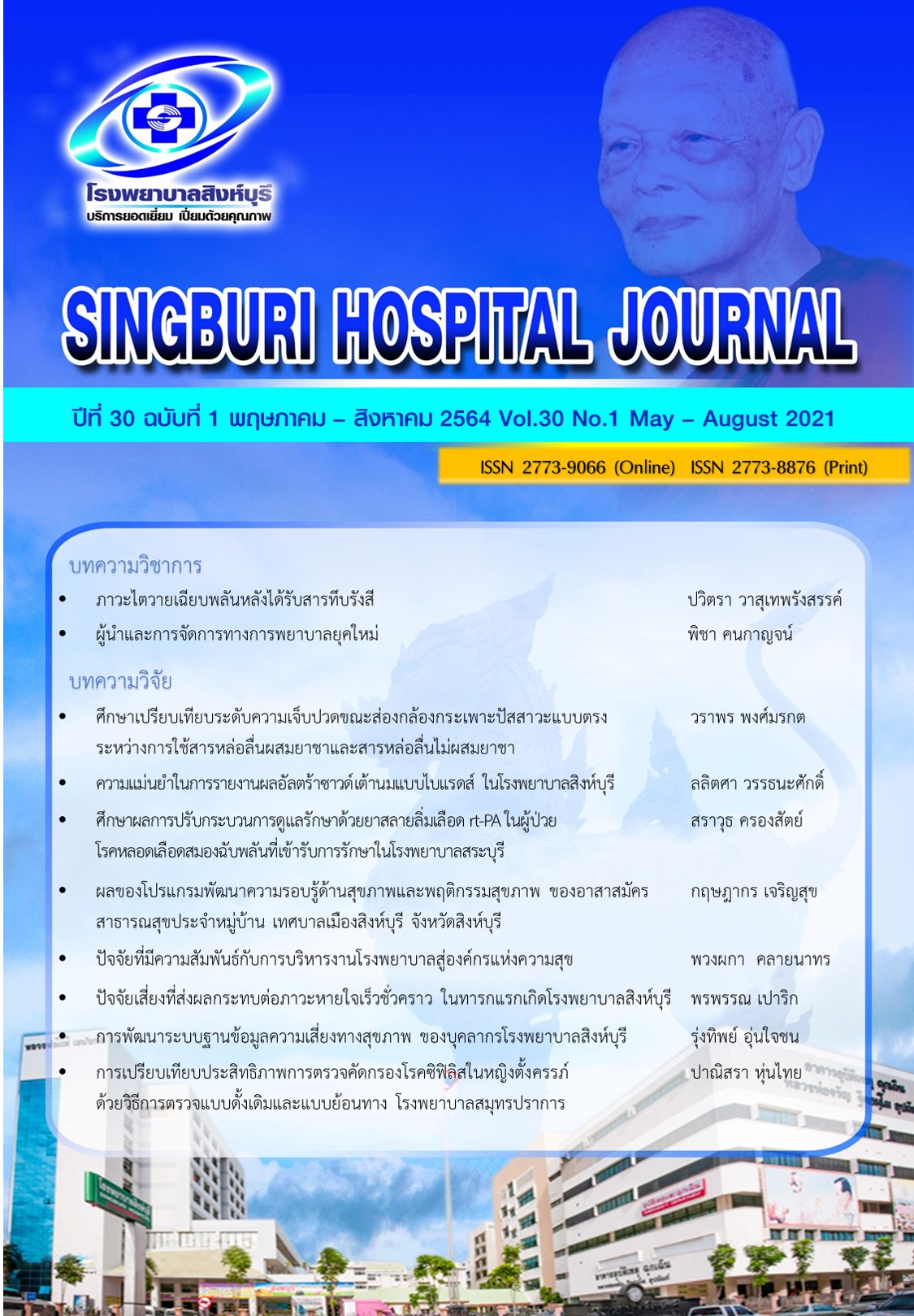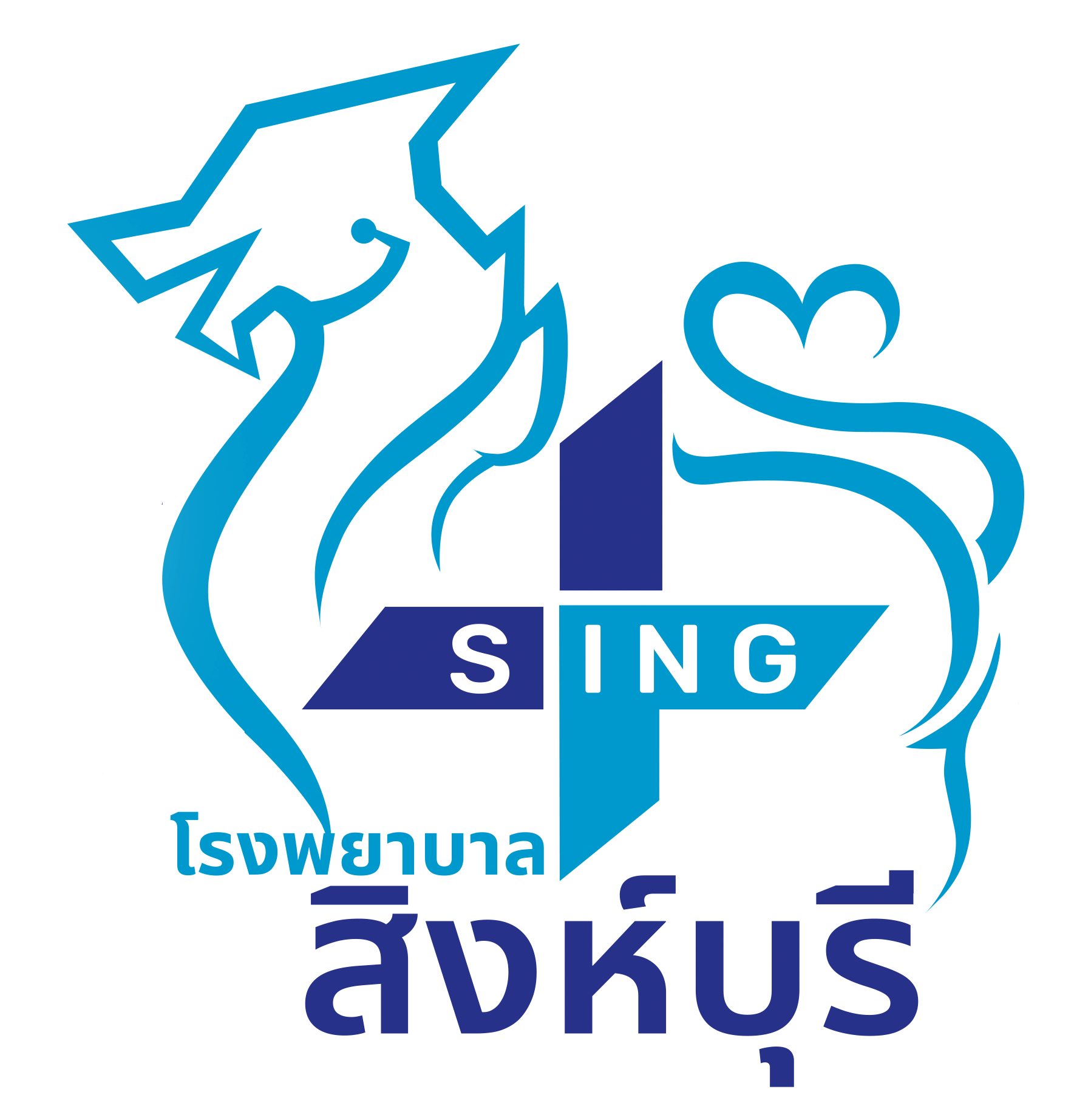ภาวะไตวายเฉียบพลันหลังได้รับสารทึบรังสี
คำสำคัญ:
ไตวายเฉียบพลัน, ภาวะไตวายเฉียบพลันที่เกิดจากการได้รับสารทึบรังสี, ภาวะไตวายเฉียบพลันหลังได้รับสารทึบรังสี, สารทึบรังสีที่มีส่วนประกอบของไอโอดีนบทคัดย่อ
ปัจจุบันมีการใช้สารทึบรังสีที่มีส่วนประกอบของไอโอดีนกันอย่างแพร่หลายเพื่อวัตถุประสงค์สำหรับการวินิจฉัยและกระบวนการรักษา ส่งผลให้พบอุบัติการณ์ของภาวะไตวายเฉียบพลันหลังได้รับสารทึบรังสีมากขึ้น ภาวะ Contrast-induced AKI (CI-AKI) คือ ภาวะไตวายเฉียบพลันที่เกิดจากการได้รับสารทึบรังสี มักเกิดขึ้นภายใน 48-72 ชั่วโมงหลังผู้ป่วยได้รับสารทึบรังสีที่มีส่วนประกอบของไอโอดีน ในขณะที่ภาวะContrast-associated AKI (CA-AKI) คือ ภาวะไตวายเฉียบพลันที่เกิดขึ้นภายใน 48 ชั่วโมงหลังผู้ป่วยได้รับสารทึบรังสีที่มีส่วนประกอบของไอโอดีนซึ่งอาจเกิดจากสาเหตุใด ๆ ก็ได้ โดยผู้ที่เกิดภาวะไตวายเฉียบพลันหลังได้รับสารทึบรังสีนั้นพบว่ามีความสัมพันธ์กับอัตราการเสียชีวิตและอัตราการป่วยที่เพิ่มขึ้น รวมทั้งยังเพิ่มอัตราการเกิดโรคไตเสื่อมเรื้อรังอีกด้วย แต่อย่างไรก็ตามพยาธิกำเนิดของภาวะไตวายเฉียบพลันหลังได้รับสารทึบรังสีนั้นยังไม่ทราบแน่ชัด จึงเป็นที่มาของการทบทวนวรรณกรรมครั้งนี้เพื่อศึกษาเพิ่มเติมเรื่อง คำจำกัดความ พยาธิกำเนิด ปัจจัยเสี่ยง และแนวทางการดูแลรักษาผู้ป่วยในกลุ่มนี้ การป้องกันหลักของภาวะไตวายเฉียบพลันหลังได้รับสารทึบรังสี คือ การใช้ปริมาณสารทึบรังสีที่มีส่วนประกอบของไอโอดีนให้น้อยที่สุดและการให้สารน้ำทดแทน ส่วนการรักษาป้องกันอื่น ๆ นั้นยังเป็นที่ถกเถียง
Downloads
เอกสารอ้างอิง
2. Wichmann JL, Katzberg RW, Litwin SE, et al. Contrast induce nephropathy. Circulation 2015; 132: 1931-1936.
3. Uptodate [Internet]. 2021 [cited 2021 Jan 4]. Available from: http://www.uptodate.com/contents/contrast-associated-and-contrast-induced-acute-kidney-injury-clinical-featutes-diagnosis-and-management.
4. Davenport MS, Perazella MA, Yee J, et al. Use of intravenous iodinated contrast media in patients with kidney disease. Radiology 2020; 294: 660-668.
5. American College of Radiology. Manual on contrast media. Version 10.3. Reston, VA: American College of Radiology,2018 [cited 2021 Jan 4]. Available from: http://www.acr.org/Clinical-Resources/Contrast-Manual.
6. Lakhal K, Ehrmann S, Chaari A, et al. Acute Kidney Injury Network definition of contrast-induced nephropathy in the critically ill: incidence and outcome. J Crit Care. 2011; 26: 593-599.
7. Detrenis S, Meschi M, Musini S, et al. Lights and shadows on the pathogenesis of contrast-induced nephropathy: state of art. Nephrol Dial Transplant 2005; 20:1542-1550.
8. Persson PB, Hansell P, Liss P. Pathophysiology of contrast medium-induced nephropathy. Kidney Int 2005; 68(11): 14-22.
9. Marcos R, Kucharik M, Bansal P, et al. Contrast-induced acute kidney injury: review and practical update. Clin Med Insights Cardiol 2019; 13: 1-13.
10. Rosso D, Minutolo R, Cianciaruso B, et al. Early effects of contrast media on renal hemodynamics and tubular function in chronic renal failure. J Am Soc Nephrol 1995; 6(5): 1451-1458.
11. Rudnick MR, Goldfarb S. Pathogenesis of contrast-induced nephropathy: experimental and clinical observations with an emphasis on the role of osmolality. Rev Cardiovasc Med 2003; 4 Suppl 5: S28-33.
12. McDonald RJ, McDonald JS, Bida JP, et al. Intravenous contrast material-induced nephropathy: causal or coincident phenomenon. Radiology 2013; 267(1): 106-118.
13. Davenport MS, Khalatbari S, Cohan RH, et al. Contrast material-induced nephrotoxicity and intravenous low-osmolality iodinated contrast material: risk stratification by using estimated glomerular filtration rate. Radiology 2013; 268(3): 719-728.
14. Ellis JH, Khalatbari S, Yosef M, et a. Influence of clinical factors on risk of contrast-induced nephrotoxicity from iv iodinated low-osmolality contrast material in patients with a low estimated glomerular filtration rate. AJR Am J Roentgenol 2019; 213(5): W188-W193.
15.Dekker IA, van der Molen AJ. Propensity score matching as substitute for randomized controlled trials on acute kidney injury after contrast media administration: A systematic review. AJR AM J Roentagenol 2018; 211: 822-826.
16. Rudnick MR, Leonberg-Yoo AK, Litt HI, et al. The controversy of contrast-induced nephropathy with intravenous contrast: what is the risk. Am J Kidney Dis. 2020; 75(1): 105-113.
17. Hall KA, Wong RW, Hunter GC, et al. Contrast-induced nephrotoxicity: the effects of vasodilator therapy. J Surg Res 1992; 53: 317-320.
18. Schwab SJ, Hlatky M, Morris KG, et al. Contrast nephrotoxicity: a randomized controlled trial of a nonionic and ionic radiographic contrast agent. N Engl J Med 1989; 320-149.
19. Nikolsky E, Mehran R, Turcot D, et al. Impact of chronic kidney disease on prognosis of patients with diabetes mellitus treated with percutaneous coronary intervention. Am J Cardiol 2004; 94: 300-305.
20. Nijssen EC, Rennenberg RJ, Nelemans PJ, et al. Prophylactic hydration to protect renal function from intravascular iodinated contrast material in patients at high risk of contrast induced nephropathy (AMACING): a prospective, randomized, phase 3, controlled, open-label, non-inferiority trial. Lancet 2017; 389(10076): 1312-1322.
21. Kooiman J, Sijpkens YW, van Buren M, et al. Randomised trial of no hydration vs. sodium bicarbonate hydration in patients with chronic kidney disease undergoing acute computed tomography-pulmonary angiography. J Thromb Haemost 2014; 12(10): 1658-1666.
22. Weisbord SD, Gallagher M, Jneid H, et al. Outcomes after angiography with sodium bicarbonate and acetylcysteine. N Engl J Med 2018; 378(7): 603-614.
23. Merten GJ, Burgess WP, Gray LV, et al. Prevention of contrast-induced nephropathy with sodium bicarbonate: a randomized controlled trial. JAMA 2004; 291(19): 2328-2334.
24. Briguori C, Visconti G, Ricciardelli B, et al. Renal insufficiency following contrast media administration trial II (REMEDIAL II): RenalGuard system in high-risk patients for contrast-induced acute kidney injury: rationale and design. EuroIntervention 2011; 6(9): 1117-1122.
25. KDIGO Clinical Practice Guideline for Acute Kidney Injury. Kidney Int Suppl 2012; 2: 8.
26. Zoungas S, Ninomiya T, Huxley R, et al. Systematic review: sodium bicarbonate treatment regimens for the prevention of contrast-induced nephropathy. Ann Intern Med 2009; 151: 631-638.
27. Eng J, Wilson RF, SubramaniamRM, et al. Comparative effect of contrast media type on the incidence of contrast-induced nephropathy: A systematic review and meta-analysis. Ann Intern Med 2016; 164(6): 417-424.
28. Cruz DN, Goh CY, Marenzi G, et al. Renal replacement therapy for prevention of radiocontrast-induced nephropathy: A systematic review. AM J Med 2012; 125(1): 66-78.
29. Rich MW, Crecelius CA. Incidence, risk factors, and clinical course of acute renal insufficiency after cardiac catheterization in patients 70 years of age or older. A prospective study. Arch Intern Med 1990; 150(6): 1237-1242.
30. Rihal CS, Textor SC, Grill DE, et al. Incidence and prognostic importance of acute renal failure after percutaneous coronary intervention. Circulation 2002; 105: 2259-2264.
31. Giacoppo D, Madhavan MV, Baber U, et al. Impact of contrast-induced acute kidney injury after percutaneous coronary intervention on short- and long-term outcomes: Pooled analysis from the HORIZONS-AMI and ACUITY trials. Circ Cardiovasc Interv 2015; 8: e002475
32. From AM, Bartholmai BJ, Williams AW, et al. Mortality associated with nephropathy after radiographic contrast exposure. Mayo Clin Proc 2008; 83(10): 1095-1100.
33. Weisbord SD, Chen H, Stone RA, et al. Associations increase in serum creatinine with mortality and length of hospital stay after coronary angiography. J Am Soc Nephrol 2006; 17(10): 2871-2877.
ดาวน์โหลด
เผยแพร่แล้ว
รูปแบบการอ้างอิง
ฉบับ
ประเภทบทความ
สัญญาอนุญาต
บทความที่ได้รับการตีพิมพ์เป็นลิขสิทธิ์ของโรงพยาบาลสิงห์บุรี
ข้อความที่ปรากฏในบทความแต่ละเรื่องในวารสารวิชาการเล่มนี้เป็นความคิดเห็นส่วนตัวของผู้เขียนแต่ละท่านไม่เกี่ยวข้องกับโรงพยาบาลสิงห์บุรี และบุคคลากรท่านอื่นๆในโรงพยาบาลฯ แต่อย่างใด ความรับผิดชอบองค์ประกอบทั้งหมดของบทความแต่ละเรื่องเป็นของผู้เขียนแต่ละท่าน หากมีความผิดพลาดใดๆ ผู้เขียนแต่ละท่านจะรับผิดชอบบทความของตนเองแต่ผู้เดียว







